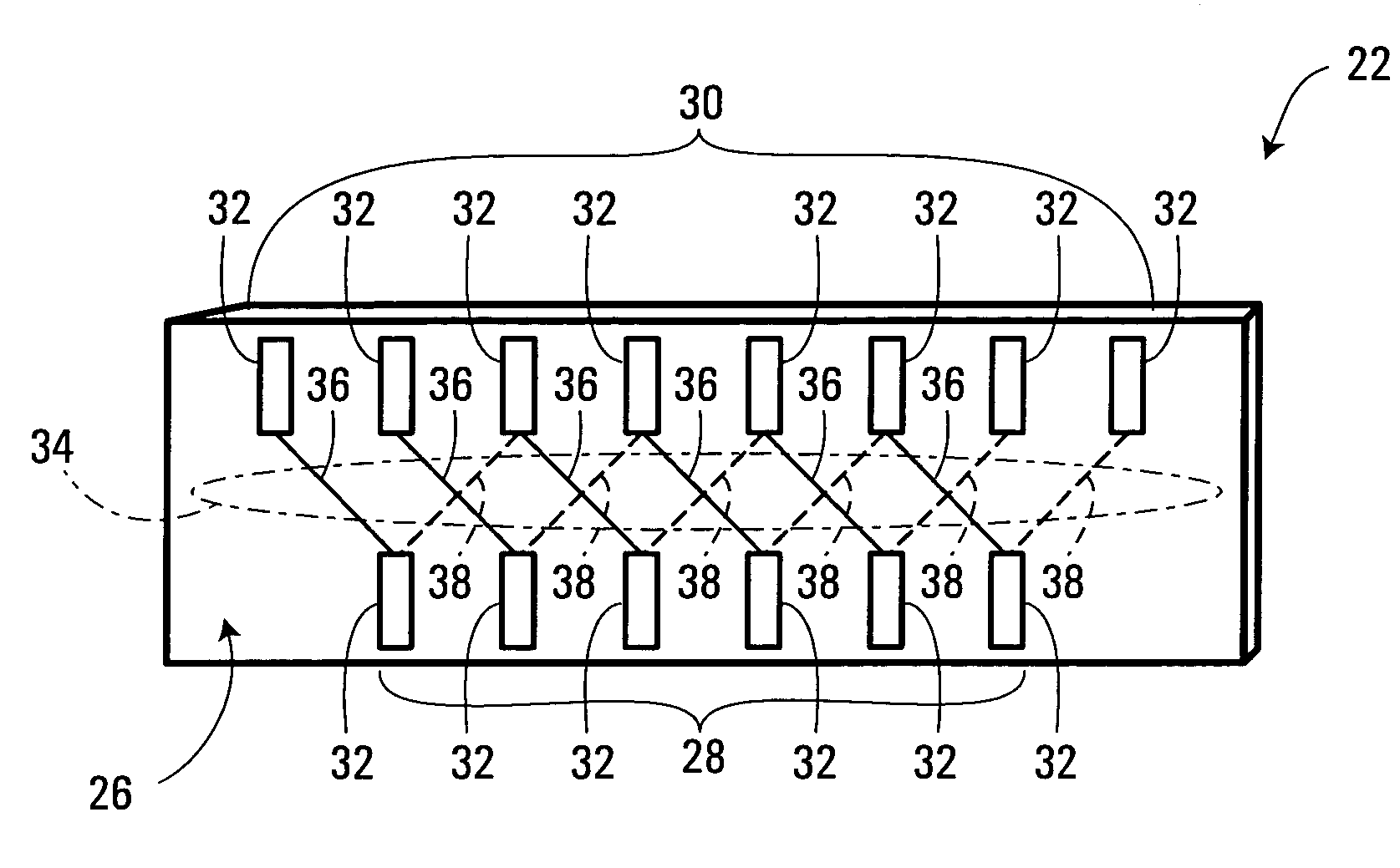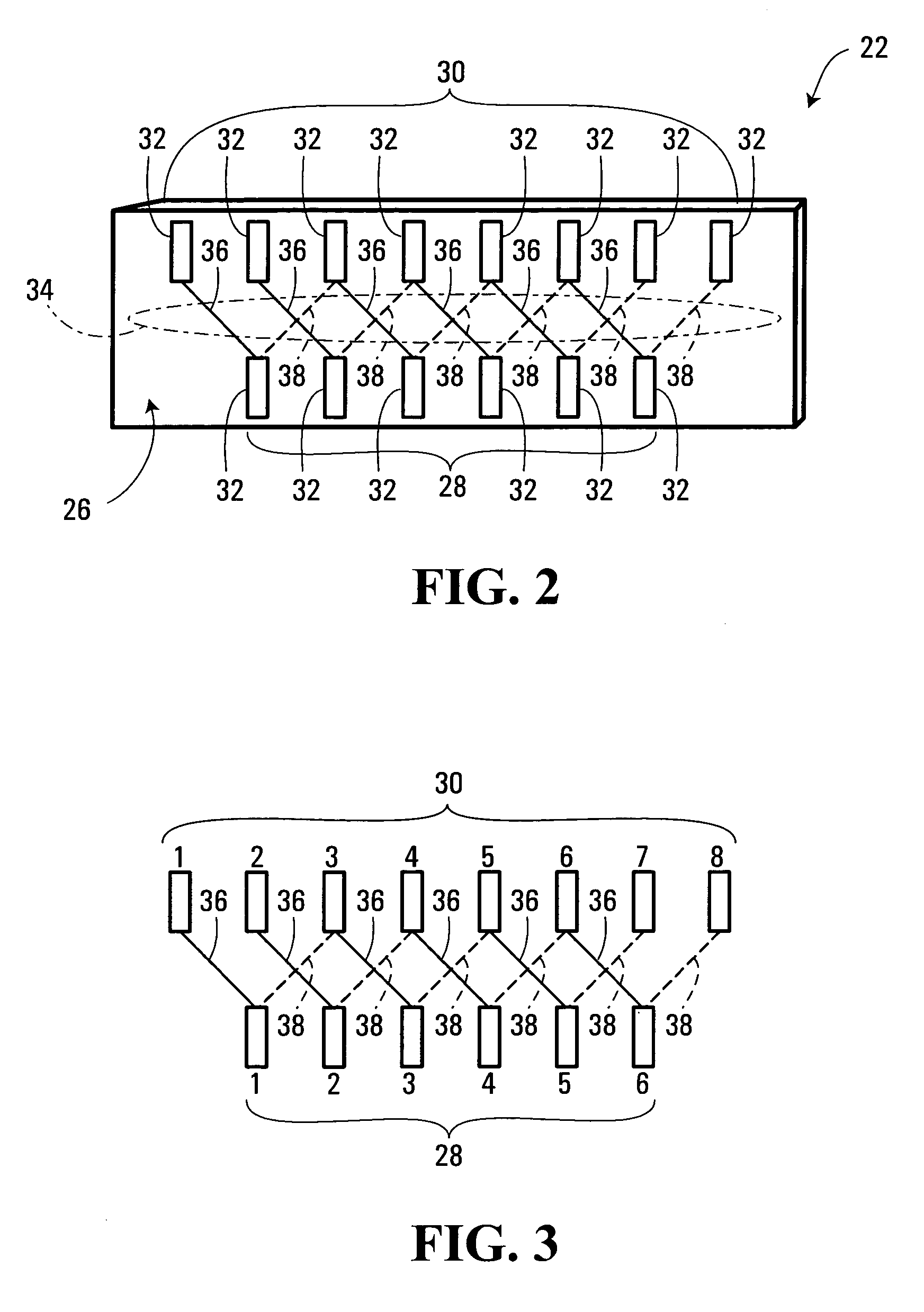Connector with fault tolerance
a technology of fault tolerance and connector, applied in the field of integrated circuit terminals, can solve the problems of existing connectors with built-in fault tolerance, incompatibility, and the possibility of connector defects, and achieve the effect of sufficient redundancy and greater freedom
- Summary
- Abstract
- Description
- Claims
- Application Information
AI Technical Summary
Benefits of technology
Problems solved by technology
Method used
Image
Examples
Embodiment Construction
[0030]FIG. 1 is a top view of a semiconductor wafer 10, one example of a typical microelectronic complex. The wafer 10 is formed of a body of semiconductor material 12 and contains a plurality of discrete functional modules 14, also referred to as cells. In this particular example of a microelectronic complex, each discrete functional module 14 includes at least one integrated circuit.
[0031]Note that in other examples of microelectronic complexes, such as the integrated circuit itself, the discrete functional modules of the microelectronic complex include the electronic components of the integrated circuit.
[0032]The wafer body of semiconductor material 12 is made of any suitable material that has the requisite electrical properties and mechanical strength, such as silicon, germanium or gallium arsenide, and may be of any size or shape. In the example of FIG. 1, the semiconductor material of wafer body 12 is silicon, the body 12 characterized by a circular shape as a result of the cy...
PUM
 Login to View More
Login to View More Abstract
Description
Claims
Application Information
 Login to View More
Login to View More - R&D
- Intellectual Property
- Life Sciences
- Materials
- Tech Scout
- Unparalleled Data Quality
- Higher Quality Content
- 60% Fewer Hallucinations
Browse by: Latest US Patents, China's latest patents, Technical Efficacy Thesaurus, Application Domain, Technology Topic, Popular Technical Reports.
© 2025 PatSnap. All rights reserved.Legal|Privacy policy|Modern Slavery Act Transparency Statement|Sitemap|About US| Contact US: help@patsnap.com



